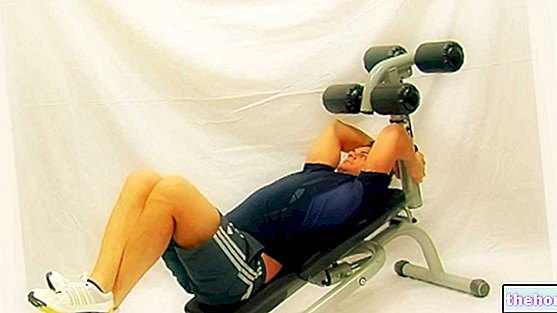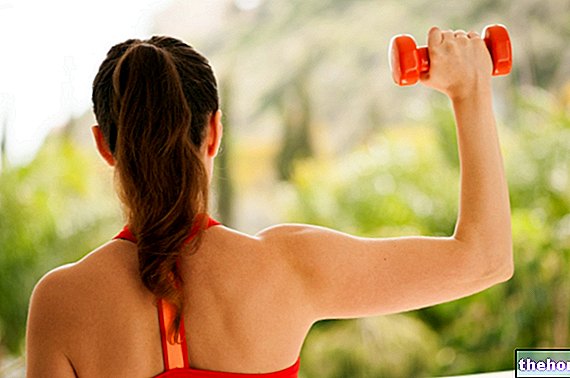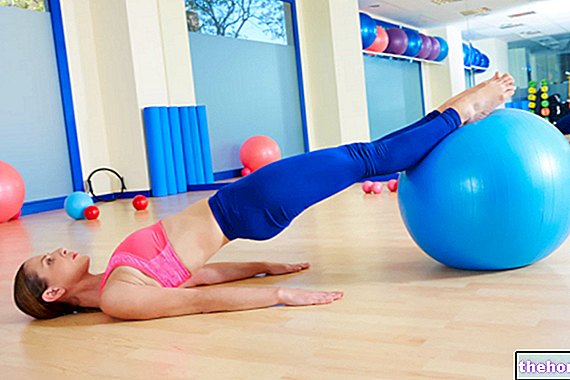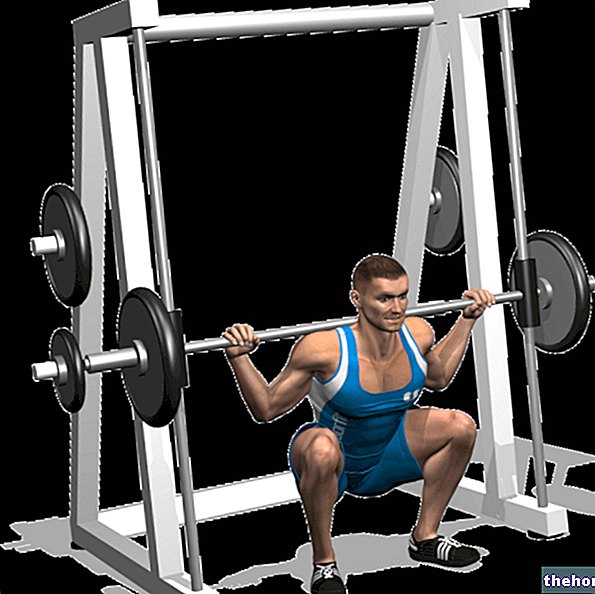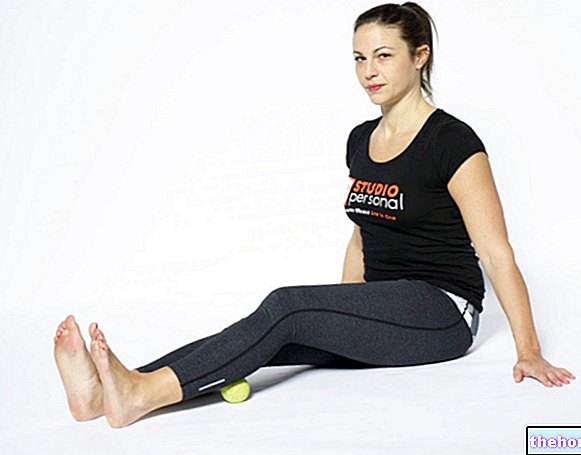Watch the video
- Watch the video on youtube
Edited by Dr. Simone Losi
In this article I will try to explain the most useful exercises for toning the buttocks, the most suitable type of training, and to dispel some "myths" still present in many Italian gyms.
The gluteal muscles are perhaps the most trained area by women in the gym, many sets and repetitions that in some cases even reach 50, using a myriad of exercises which, in the vast majority of cases, are not very useful for development, therefore for the toning, of this district.
A little anatomy
Let's try to quickly review the anatomy of the buttock, which must always be taken into consideration in the execution of an exercise.
The GREAT GLUTEAL originates from the external surface of the ilium wing, including the iliac crest, the dorsal surface of the sacrum and the sacrotuberous ligament, and is inserted with some fibers into the tibial ileus tract and with others on the gluteal tuberosity of the femur; its main action is the extension of the hip and acts as a support in the external rotation.
The best exercises to train the buttocks
Most of the exercises that are performed, especially by women, are not very conditioning and productive, mainly for two simple reasons: the load is always very light, while the buttock needs a significant load (from 60% for a beginner, up to to reach "80% of the maximum for the advanced) to be stimulated, therefore" toned "; furthermore, the functions for which the buttock is responsible are not used, ie exercises in which there is no pre-stretching and flexion are performed of the gluteus, or exercises in which the extension of the hip in the concentric phase is reduced.
The jumps in all versions, the abductor machine and the press, are useless exercises for the development of the gluteus maximus, however, while the first two tend to be carried out with little weight and a large number of reps, believing that in this way it burns fat at the level of the gluteus medius (in reality, an almost useless job is being done as the gluteus medius has a predominant stabilization function and is not deputed to make movements with a large number of repetitions), the press - which is often done using a number of lower reps - it mainly tones the quadriceps and the vastus, since in this exercise you do not start with the gluteus in maximum stretch, consequently during the concentric phase you cannot have the maximum recruitment of fibers for this muscle.

For the advanced I recommend a little-used version of the lunge, but extremely effective: try to perform this walking exercise, but instead of keeping your back straight, flex it forward with each step and then in the eccentric phase extend it upwards, using the contraction. of the buttock; in this case the other insertion of the gluteus maximus is used in an important way, not the one at the level of the femur, but the one at the level of the iliac crest;

Another good exercise is the climb on the cube using a height proportional to the degree of training of the person; also in this case, to increase the intensity of the exercise (fundamental factor for toning), you can use two dumbbells or a barbell. .
At this point you may be wondering why he didn't include the squat among the "best" exercises for the buttocks. Indeed it is a good exercise, but on condition that it is performed correctly and with a good load; often, however, due to problems and blocks at the level of the pelvis, knee and tibio-tarsal joint, it is performed incorrectly or partially; in this regard, electromyographic studies say that the recruitment of the gluteus maximus in the partial squat is very limited, while it is very high in the full squat, which however - given the dutiful use of heavy loads - becomes a "dangerous" exercise especially for the knee joint and the lumbar area. So I would opt more for the use of lunges, perhaps using a progression in which they are initially performed in a static way, then move on to the "walking" version and finally, for the more daring, to the use of flexion of the spine as previously explained.
Finally, I would like to recommend another exercise that is rarely used in the gym by women, but which gives excellent results; I'm talking about the "BALZI", which instead are used massively in athletic preparations; in fact, the women who use these exercises have a very toned buttock and it is much more physiological to jump or lunge than abducting the limbs, or extending the hip monopodally.
In fact, if we think about it, the GLUTEO is one of the most trained muscles in the weight room and in the courses, but despite this, most women are dissatisfied with the results obtained or even with the non-results, and the reasons are those explained above.
Often it is enough to lower the training volume a little, raise the intensity, choose just a couple of "functional and physiological" exercises and you're done .... simple isn't it ?!

